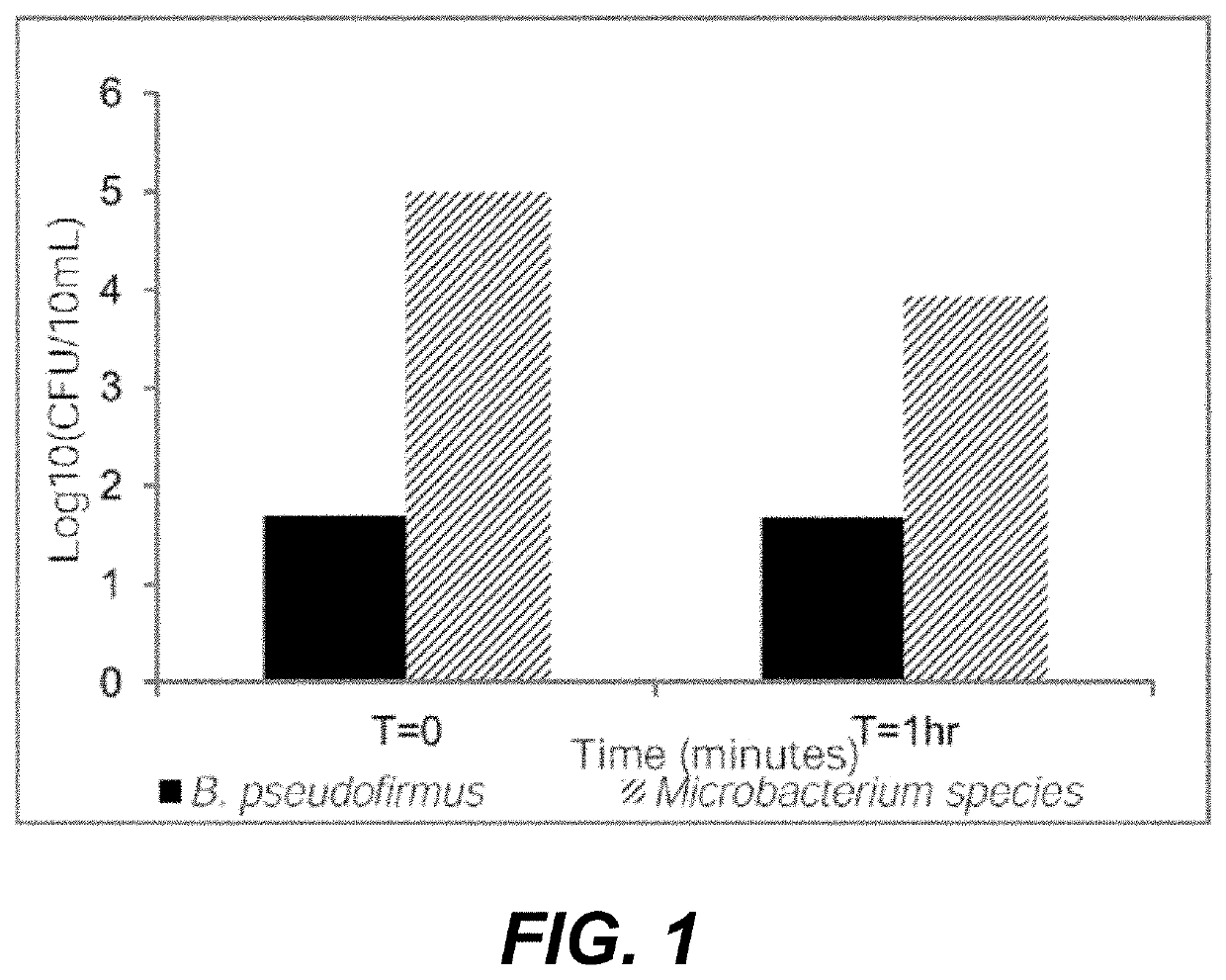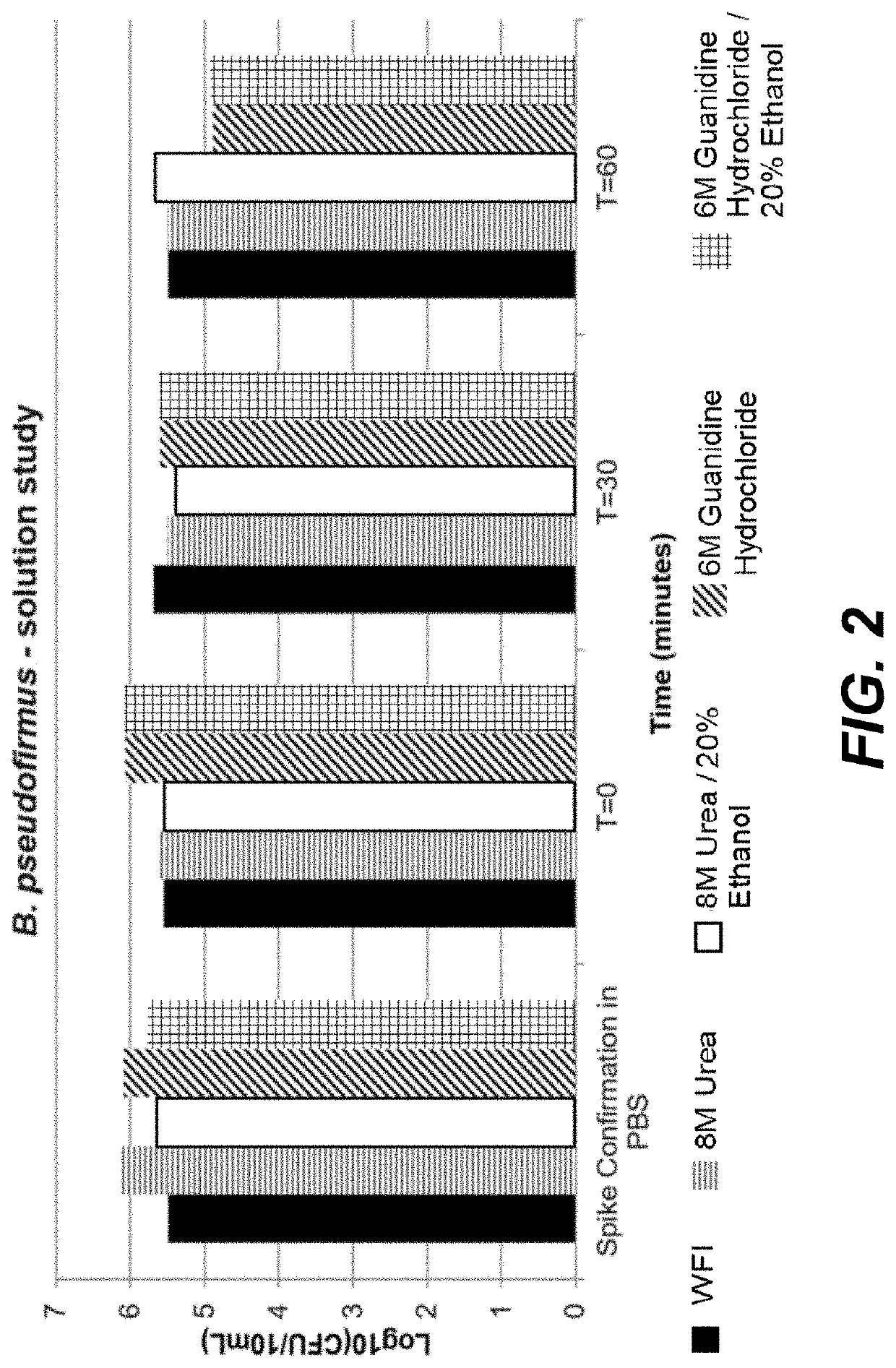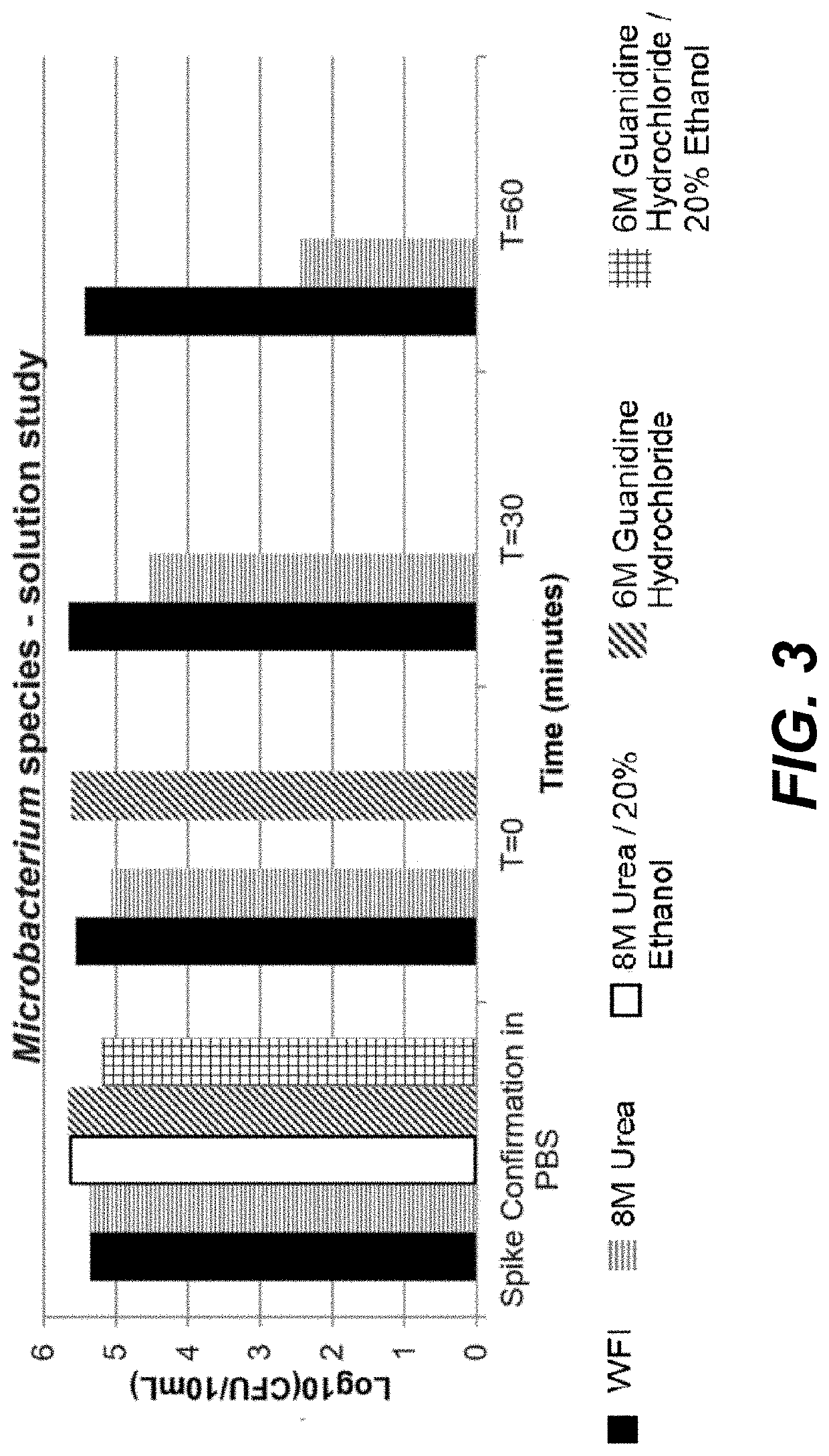Compositions and methods for reducing bioburden in chromatography
a chromatography and composition technology, applied in the field of microbial bioburden reduction, can solve the problems of column performance generally degrade, column packing deterioration, product purity decline, etc., and achieve the effect of reducing microbial bioburden
- Summary
- Abstract
- Description
- Claims
- Application Information
AI Technical Summary
Problems solved by technology
Method used
Image
Examples
example 1
Acetic Acid Solution Reduces Bioburden in a Protein A Column
[0119]Reduction of microbes in three packed 1 cm MabSelect™ Xtra columns was assessed by measuring the bioburden after the column is spiked with a particular bacterium and then again after reducing microbes with a 0.5 M acetic acid solution.
[0120]First, the column was flushed with two column volumes of water for injection (WFI). A 20 mL sample was collected and served as a negative control with respect to the amount of bacteria in the column.
[0121]In each of the three MabSelect™ Xtra columns, a representative microorganism was added to the column by adding the microorganism to WFI to form spiked \WI, wherein the microorganism is present in a titer of approximately 105 cfu / mL. One column was spiked with spore-forming bacteria, particularly Bacillus psuedofirmus. One column was spiked with Gram positive bacteria, particularly Microbacterium spp. The third column was spiked with Gram negative bacteria, particularly Stenotropho...
example 2
Acetic Acid / Ethanol Solution Reduces Bioburden in a Protein A Column
[0136]The steps in Example 1 above were undertaken, except that instead of 0.5 M acetic acid, a solution of 0.1 M acetic acid and 20% ethanol was used. As with Example 1, the 0.1 M acetic acid and 20% ethanol solution was held for one hour in one set of experiments and for four hours in another set of experiments. The results below also show a substantial decrease in the amount of bacteria after the microbe bioburden reduction solution was held in the column for either one or four hours.
[0137]
TABLE 4MicrobepseudofirmuspseudofirmusBioburdenSaturation / Pre-Post-MicrobeMicrobe BioburdenReductionMicrobe BioburdenBioburdenReduction SolutionDurationReduction (log10)Reduction (log10)0.1M acetic acid1 hour2.21.8and 20% ethanol0.1M acetic acid4 hours2.50and 20% ethanol
[0138]
TABLE 5spp.MicrobacteriumMicrobeSaturation / spp.BioburdenPre-MicrobePost-MicrobeMicrobe BioburdenReductionBioburdenBioburdenReduction SolutionDurationReduc...
example 3
A Urea Solution Reduces Bioburden in a Protein A Column
[0143]The steps in Example 1 above were undertaken, except that instead of 0.5 M acetic acid, a solution of 8 M urea and a solution of 8 M urea / 20% ethanol were used and only a one hour hold was measured. The results in Table 7 below show a substantial decrease in bacteria after the microbe bioburden reduction solution was held in the column for one hour. The reduction in spore-forming B. psuedofirmus was extensive and unexpected, particularly after only one hour of treatment.
[0144]
TABLE 7MicrobialBioburdenLog10 of ReductionReductionHoldBacillusMicrobacteriumStenotrophomonasSolutionstimepseudofirmusspeciesmaltophilia8M Urea1 hr1.95.85.78M Urea / 1 hr1.65.76.720%Ethanol
PUM
| Property | Measurement | Unit |
|---|---|---|
| temperature | aaaaa | aaaaa |
| temperature | aaaaa | aaaaa |
| temperature | aaaaa | aaaaa |
Abstract
Description
Claims
Application Information
 Login to view more
Login to view more - R&D Engineer
- R&D Manager
- IP Professional
- Industry Leading Data Capabilities
- Powerful AI technology
- Patent DNA Extraction
Browse by: Latest US Patents, China's latest patents, Technical Efficacy Thesaurus, Application Domain, Technology Topic.
© 2024 PatSnap. All rights reserved.Legal|Privacy policy|Modern Slavery Act Transparency Statement|Sitemap



